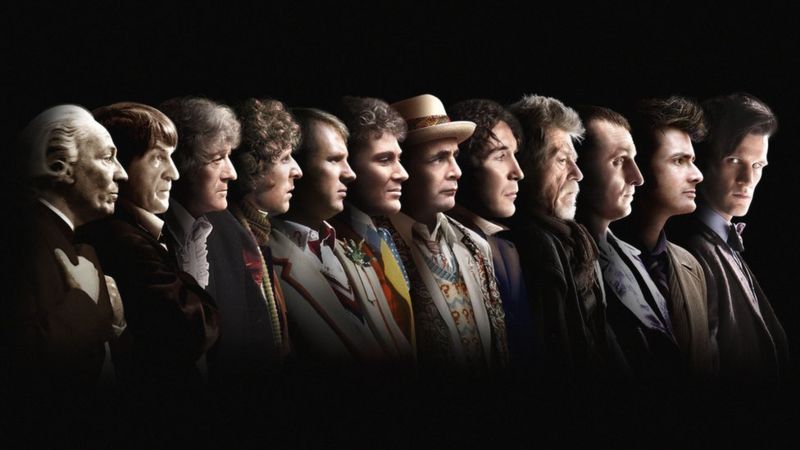Sam ‘Jesta’ Geden, on behalf of the Science-Fiction and Fantasy Society, reveals how ‘Doctor Who’ helped him built his acceptance and understanding of change
On Christmas Day 2017, the world said goodbye to Peter Capaldi’s Twelfth Doctor inTwice Upon a Time (Steven Moffat, 2017) as he embraced a new lease on life and regenerated into Jodie Whittaker’s Thirteenth Doctor, an unprecedented female incarnation of the main character.

The main gimmick of Doctor Who since 1966 is that the Doctor is able to ‘regenerate’ – completely change their appearance and personality – whenever mortally wounded. This leads to wildly different interpretations of the character, as well as unlocking new story possibilities. In Twice Upon a Time, the Twelfth Doctor – through timey-wimey crossing his own history – comes face-to-face with his original incarnation (originally played by William Hartnell, but here by David Bradley), both on the cusp of regeneration and fearful of the cost of carrying on. Regeneration stories in the modern era of Doctor Whoalready tend to be quite reflective, but literally confronting your past and seeing the gulf of experience between you puts your journey into perspective – and how far you still have to go.
As the newly-regenerated Second Doctor (as played by Patrick Troughton) says to his companions Polly and Ben in The Power of the Daleks (David Whitaker, 1966), ‘life depends on change and renewal’, and that has been a staple of the series since Hartnell departed the series rather unceremoniously in The Tenth Planet(Gerry Davis and Kit Pedler, 1966) after his failing health became more apparent and disruptive to the show’s tight production schedule. It was – and still is – common for actors to replace roles in shows and still play the same character, with the audience expected to suspend their disbelief and believe they’re still the same person. With Doctor Who, that both has and hasn’t been the case. Oh yeah, Doctor Who is very much Schrödinger’s character! See, story editor Gerry Davis and producer Innes Lloyd realised that, with such a fantastical sci-fi show such as Doctor Who, they could basically make any rule they wanted up. So when it came time to recast Hartnell, they decided not to put another man in a white wig and pretend to be exactly the same character, but instead introduce a hitherto-unknown concept to fully rejuvenate and change him. In 1966, the Doctor’s frail body renewed itself and transformed into that of a younger man with a markedly different personality, with the audience – and the companions themselves – unsure of whether this is the same character or not. Turns out, they are and aren’t.

I’m not going to go into the wholehistory of the show, because that’s a dissertation-sized essay in its own right. But every time the actor changed for the Doctor, big shifts in production and narrative followed suit. Patrick Troughton’s Second Doctor was more openly eccentric and had a greater physicality about him, which allowed for more energetic stories than the ‘gentleman observer’ that Hartnell was. Jon Pertwee’s Third Doctor saw him exiled on Earth, primarily to cut down on BBC production costs, but this led to his era of Earth-bound stories having a tinge of James Bond to them. They dealt with heavy themes such as xenophobia, environmentalism, international espionage and nuclear war. Tom Baker’s Fourth Doctor became untethered from Earth relatively quickly into his era and the production team pivoted to codifying the ‘Space Gothic’ genre, with stories taking inspiration from famous literature such as The Brain of Morbius(Robin Bland, 1976) being the show’s take on Frankenstein(Mary Shelley, 1818)…
… And on and on it goes. Again, not going toodeep into this. I’ll move onto the modern series now, since I imagine most people reading this grew up on the modern series and can better identify with it.
Nowadays we identify Doctor Whonot only with the lead actor but also the showrunner. Russell T Davies oversaw the series’ initial revival and the first two modern Doctors, played by Christopher Eccleston and David Tennant. As such, there is a good sense of continuity in the transition between the two actors, with the show maintaining a soap opera aesthetic with brief glimpses into the heart of darkness of the character. When Davies was succeeded by Steven Moffat, and Tennant by Matt Smith, the soap opera aesthetic was replaced by a ‘dark fairytale’ one, with stories – like the Space Gothic of the 70s – taking well known fairytale tropes and giving them a sci-fi edge. When Smith was succeeded by Capaldi, the relatively warm and relatable idea of the Doctor was thrown out and replaced by a prickly, distant and conflicted character, and the tone and style of storytelling shifted to accommodate that. And finally, with Whittaker taking the helm and Chris Chibnall succeeding Moffat as showrunner, the show has gained a more life-affirming wonder to it.
Now, that’s all the exposition out of the way… What’s this article really about?
Well, Doctor Whois about change. It wasn’t designed that way in 1963, but the brilliant spark of madness that is the concept of regeneration solidified that the show was all about confronting change head-on and trying to navigate yourself through the changes happening around and within you.
Some bemoan the inclusion of a female Doctor, saying it takes the show ‘too far beyond the point of credibility’ since every other Doctor before her had been male, but the truth is the show has always been pushing boundaries within itself. Before 1966, the Doctor was only William Hartnell. Before 1981, the Doctor was only brown-haired and at least in his 40s. Before 1987, the Doctor had always been RP English rather than Scottish, Liverpudlian or Mancunian. Before 2010, the Doctor had always been at least 30 years old. And now, before 2017, the Doctor had always been male. Tradition in Doctor Whoisabout subverting the normand notobeying traditions. Breaking boundaries of what it means to play and interpret the character of the Doctor has been at the heart of the show since Patrick Troughton looked into a mirror and saw the reflection of Hartnell transform into his own.

And how change is handled in Doctor Whoalso runs parallel to how wedeal with change. Just as the Doctor changes on average every three years, we are not the same people we were three years ago. Being at university is itself a transformative experience, and from the time you start your first class to the time you graduate, your whole world has opened up immeasurably to new people, skills and experiences. By virtue of you engaging with your courses and community, you are not the same person you were when you arrived here.
And that can be frightening, especially if you become aware that you’re on the edge of seismic change within yourself and must consciously adapt to a situation you’ve found yourself in. Just because you’re not the same person you once were does not mean you’re no longer you. It may take time to navigate yourself as you discover and try new things; you may even learn things about yourself you never knew before. But to live is to accept change, and to adamantly decide to stagnate is not an option when the world around you continues to turn.
Twice Upon a Timesees the Doctor accept that life depends on change and renewal, and that seismic shifts in life have to happen for us to carry on. When he does decide to relinquish his fears, he gives his future self advice to steer them to new horizons. He echoes Bertrand Russell by declaring that ‘hate is always foolish, and love is always wise’ and ends with the mantra of ‘laugh hard; run fast; be kind.’
The Doctor’s advice applies to all of us as we riot into the new day and face the prospect of a new and unknown life once we don those robes and collect that mythical piece of paper; proof that we are not the same people we were when we entered university: we have grown wiser, stronger and more courageous in ourselves.